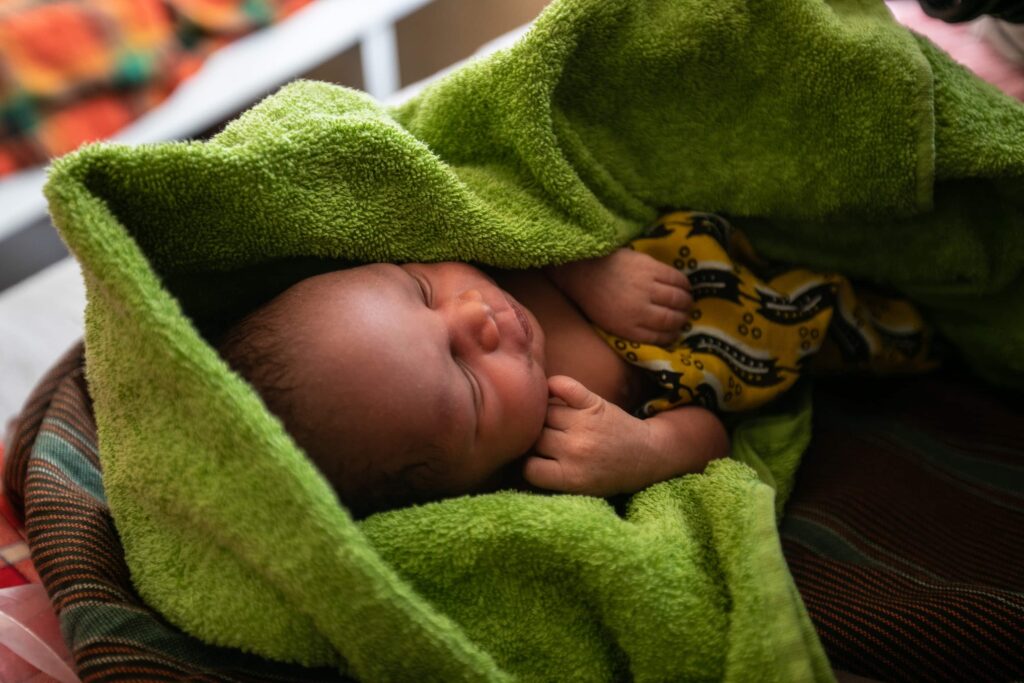A new continent-wide study has found that exposure to extreme heat during pregnancy significantly increases the risk of neonatal mortality, which is deaths occurring within the first month of life.
Sub-Saharan Africa, already carrying the world’s heaviest burden of newborn deaths, is now facing an added threat; climate change.
Despite decades of progress in reducing child deaths, the region still recorded 27 neonatal deaths per 1,000 live births in 2022, far above global averages. Researchers now say rising temperatures, fuelled by climate change, are undermining fragile gains.
Heat and the unborn child
The study analysed more than 880,000 birth records from 33 African countries between 2006 and 2020, linking health data with high-resolution temperature and humidity records.
Unlike previous research, it considered not just heat but also humidity, captured through what scientists call wet-bulb temperature, a measure of how heat is actually felt by the human body.
The findings are stark: a cumulative rise of 150°C in extreme heat exposure during pregnancy translates into two additional neonatal deaths per 1,000 live births. Put simply, the hotter it gets during pregnancy, the more dangerous it becomes for newborns.
Scientists explain that extreme heat places stress on pregnant women by reducing placental blood flow, causing dehydration, and straining the body’s cooling mechanisms. This in turn can compromise fetal growth and survival.
Rural families most exposed
The impacts are not evenly spread. The research shows that rural communities suffer the greatest losses, while urban areas appear less affected.
Mothers in rural households, often with no electricity, limited education, and poor access to healthcare, are less able to shield themselves from high heat. Without fans or air conditioning, heat stress worsens. Long journeys to distant clinics, made riskier in scorching conditions, also mean fewer prenatal checkups.
The study found that just 50 additional days of extreme heat during pregnancy could result in up to four more newborn deaths per 1,000 births in rural settings.
A compounded climate risk
While infectious diseases and malnutrition have long been linked to infant mortality, this research adds a new climate-related layer. Extreme heat, particularly when combined with poor sanitation and unsafe water, creates a “double burden” of risk. Hot and humid conditions accelerate the growth of harmful pathogens, while lack of clean water leaves pregnant women and newborns more vulnerable to infections.
“These results suggest climate change is not just an environmental crisis—it is also a maternal and newborn health crisis,” the authors noted.
Who is most vulnerable?
The study highlights three overlapping groups most at risk:
- Low-income households: poorer families saw sharper increases in neonatal deaths linked to heat exposure compared with wealthier households.
- Homes without electricity: lack of cooling options heightened risks of heat stress for mothers.
- Women with limited education: mothers with little or no schooling were less likely to adopt protective health practices or recognise danger signs during pregnancy.
This “heat inequality”, as experts describe it, underscores how social and economic conditions amplify the effects of climate change.
A race against time
Global targets under the Sustainable Development Goals (SDGs) call for major reductions in child mortality by 2030. While 133 countries are on track, projections suggest sub-Saharan Africa may not reach the goal until the end of the century unless urgent action is taken.
Experts say this new evidence should push policymakers to act faster.
Pathways to protection
The researchers recommend a mix of short-term and long-term strategies. These include:
- Expanding community-based prenatal care, such as deploying health workers who can reach women in their homes.
- Investing in safe water and improved sanitation, particularly in rural areas where heat and infection risks interact.
- Boosting access to electricity to support cooling measures.
- Scaling up education for women and girls, which equips mothers with the knowledge to better protect their pregnancies.
Longer term, tackling the drivers of climate change itself remains essential. Without major cuts in greenhouse gas emissions, the intensity and duration of extreme heat in Africa will continue to grow, deepening neonatal mortality risks.
A hidden casualty of climate change
While climate change is often discussed in terms of drought, floods, and food insecurity, this study shifts the focus to the most fragile stage of human life—before and immediately after birth.
By identifying extreme heat as a driver of newborn deaths, it reframes Africa’s neonatal mortality challenge not only as a public health issue but also as a climate justice issue. The continent, responsible for only a small share of global emissions, is already paying the price with the lives of its youngest citizens.
As one health expert put it: “Every fraction of a degree matters—not only for crops and livelihoods, but for whether a child survives their first month of life.”










